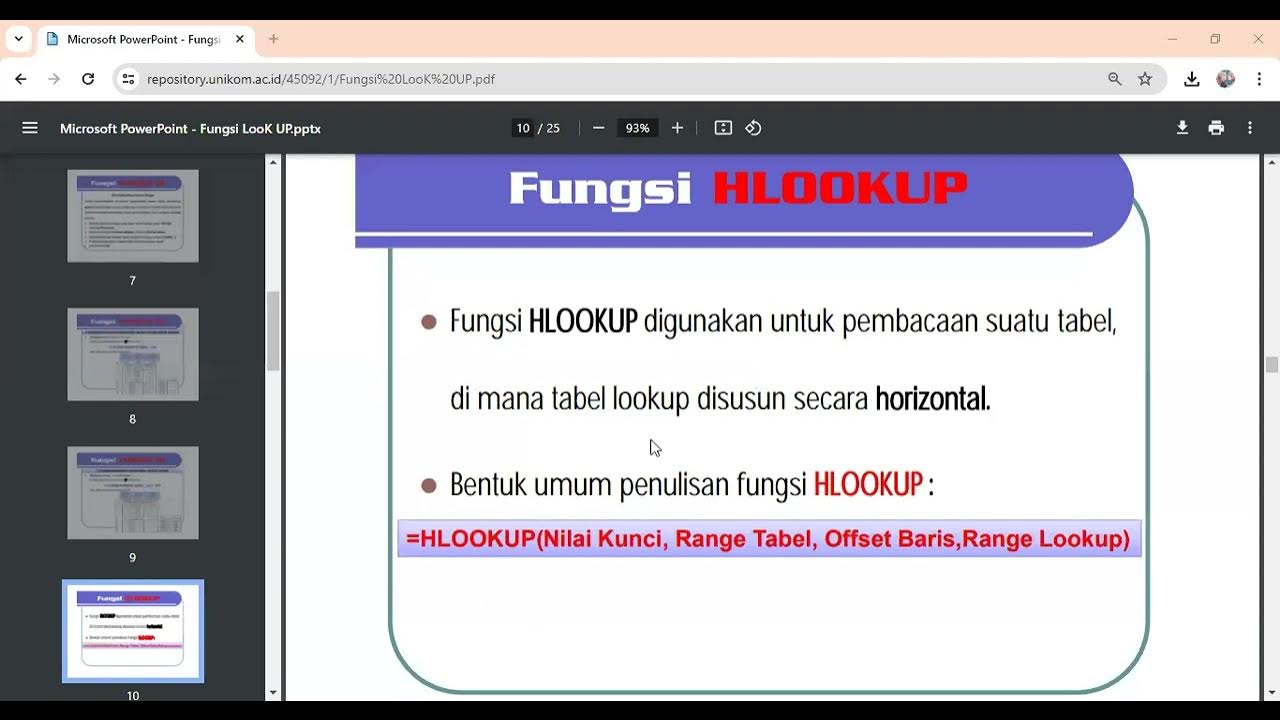XLOOKUP in Excel | Excel Tutorials for Beginners
Summary
TLDRThis video tutorial introduces Excel's XLOOKUP function, a powerful replacement for VLOOKUP. The host explains how XLOOKUP simplifies searching for data within arrays, offers multiple outputs, and avoids common issues with VLOOKUP, such as the need to manually adjust column references when data is altered. The tutorial covers various use cases, including searching by exact match, wildcards, and how XLOOKUP can be integrated with other functions like SUM. The video also highlights the benefits of XLOOKUP over VLOOKUP, making Excel tasks easier and more efficient.
Takeaways
- 😀 XLOOKUP is a new Excel function that is considered a better option than VLOOKUP for looking up and returning values from arrays.
- 🔍 XLOOKUP allows for an exact match search by default, making it more straightforward than VLOOKUP, which requires more setup.
- 📧 In a simple use case, XLOOKUP can search for a name in one column and return a corresponding email from another column.
- 🔄 XLOOKUP supports returning multiple values across different columns, unlike VLOOKUP which only returns a single column.
- ❓ The 'If Not Found' option in XLOOKUP allows for a custom output when no match is found, enhancing error handling.
- ⭐ XLOOKUP provides several match modes, including exact matches, wildcard matches, and closest matches, offering more flexibility than VLOOKUP.
- 📊 XLOOKUP can also perform horizontal lookups, searching across rows, which adds to its versatility.
- ➕ XLOOKUP can be used within other Excel functions like SUM, allowing for calculations between specific lookup results.
- 🧩 VLOOKUP requires specifying the column index manually, and if the table structure changes (e.g., new columns are added), the formula can break, unlike XLOOKUP, which adapts automatically.
- 🔁 One of the biggest advantages of XLOOKUP is its ability to update automatically if columns or rows are added or rearranged, making it more robust and reliable than VLOOKUP.
Q & A
What is XLOOKUP in Excel?
-XLOOKUP is a new Excel function designed to replace or improve upon the VLOOKUP function. It searches for a match in a range or array and returns the corresponding item from another range. It is more flexible than VLOOKUP and allows for exact matches by default.
Why is XLOOKUP considered better than VLOOKUP?
-XLOOKUP is considered better than VLOOKUP because it doesn't require the data to be sorted, allows for exact matches by default, and can search both horizontally and vertically. Additionally, XLOOKUP can return values from columns that are to the left of the lookup column, which VLOOKUP cannot do.
How does the 'if not found' option in XLOOKUP work?
-The 'if not found' option in XLOOKUP allows you to specify what should be returned if the lookup value is not found. For example, you can return a custom message like 'Not found' or another value if the search doesn't yield any result.
What are the match modes available in XLOOKUP?
-XLOOKUP offers four match modes: 0 (exact match), -1 (exact match or next smaller item), 1 (exact match or next larger item), and 2 (wildcard character match). Each mode offers different ways to handle the search and the kind of match you need.
How does the wildcard character match work in XLOOKUP?
-In XLOOKUP, the wildcard character match allows you to search for partial matches. By using an asterisk (*) before or after your lookup value, XLOOKUP can find any string that contains that value, regardless of the characters before or after it.
Can XLOOKUP return multiple columns of data?
-Yes, XLOOKUP can return multiple columns of data by specifying a range in the return array. For instance, you can look up a name and return both the end date and email by specifying the range that includes both columns.
How does XLOOKUP handle searches from top to bottom or bottom to top?
-XLOOKUP has a search mode that lets you control whether it searches from the first item to the last (top to bottom) or from the last item to the first (bottom to top). This is helpful when you need to prioritize the most recent data or work through a dataset in reverse order.
How is XLOOKUP used in combination with other functions like SUM?
-You can combine XLOOKUP with functions like SUM to sum values from a range of data. For example, you can use XLOOKUP to find specific values in two different cells and then sum them together using the SUM function.
What is a key limitation of VLOOKUP that XLOOKUP overcomes?
-One key limitation of VLOOKUP is that it relies on fixed column numbers, so if you insert or remove a column, your formula can break. XLOOKUP dynamically adjusts to changes in the data structure, making it more reliable when working with evolving datasets.
How does XLOOKUP handle changes in the dataset, such as adding new columns?
-XLOOKUP automatically adjusts to changes in the dataset, such as inserting new columns. It keeps track of the original array, ensuring that the lookup and return arrays remain accurate, even when new columns are added.
Outlines

This section is available to paid users only. Please upgrade to access this part.
Upgrade NowMindmap

This section is available to paid users only. Please upgrade to access this part.
Upgrade NowKeywords

This section is available to paid users only. Please upgrade to access this part.
Upgrade NowHighlights

This section is available to paid users only. Please upgrade to access this part.
Upgrade NowTranscripts

This section is available to paid users only. Please upgrade to access this part.
Upgrade Now5.0 / 5 (0 votes)





